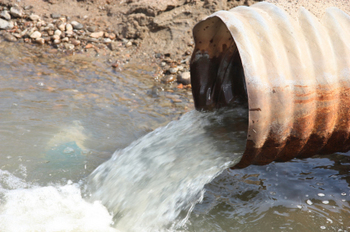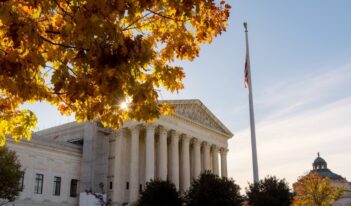
Court vacates EPA letters to Senator, holding they amounted to new regulations.
When the Environmental Protection Agency (EPA) wrote Senator Charles Grassley two letters discussing water treatment regulations, the agency probably did not think it was crafting new regulations. However, a federal appeals court recently disagreed and vacated the letters for violating the Administrative Procedure Act (APA).
The case began when the Iowa League of Cities petitioned the appeals court. The case focused on two areas of water treatment regulation: the use of “mixing zones” in areas where sewer outfalls meet the bodies of water they are emptying into, and “blending,” which involves the use of chemical processes as a substitute for traditional, biological-based secondary sewage treatment.
The Clean Water Act prohibits the discharge of pollutants from a point source, such as a sewer outfall, in a manner that does not comply with the act. When a mixing zone is authorized, a permit holder does not have to comply with effluent limitations directly at the point of the sewer outfall. In other words, the water coming out of the end of the pipe is allowed to be more polluted than regulations would typically allow. The pollutants are instead allowed to diffuse into the waterway before a measurement for compliance occurs.
In 2011, Senator Charles Grassley sent a request to the EPA, on behalf of the League of Cities, asking for clarification on when states are allowed to authorize mixing zones in their implementation of the federal Clean Water Act. According to the court, the EPA responded by stating that mixing zones “should not be permitted where they may endanger critical areas,” such as “recreational areas.” The EPA was particularly concerned about allowing mixing zones near recreational areas where people swim or come into contact with the water.
The court had to grapple with whether the EPA’s position was a departure from its earlier guidance on state-authorized mixing zones. The League of Cities argued that what the agency wrote in its letter to Senator Grassley amounted to a new regulation that was inconsistent with the EPA’s prior guidance on the subject and should be vacated.
The court agreed that the letter shifted the EPA’s position from sometimes allowing states to authorize mixing zones near recreational areas to never allowing states to authorize them near recreational areas. It then considered whether the position outlined in the EPA’s letter was binding upon water treatment facilities and state agencies. If so, then the EPA had articulated what amounted to a rule and was bound to follow the procedures for notice-and-comment rulemaking laid out in the APA.
The court held that the EPA’s use of the phrase “should not be permitted” was binding because it “spoke in mandatory terms.” The court was further persuaded by affidavits from representatives of municipal waste water facilities and the Iowa Department of Natural Resources (DNR) that suggested they were interpreting the letters as a binding rule.
For its part, the EPA argued that the letter was not binding and that the governing regulations left the use of mixing zones up to a state’s discretion. The court strongly rejected this position, characterizing it as “Orwellian Newspeak.” Finding that the letter amounted to a legislative rule, the court held that the APA applied, and that the EPA had not adhered to its procedural requirements. The court vacated the letter.
The court also scrutinized a second EPA letter to Senator Grassley that focused on “blending.” Treatment facilities usually pass sewage through primary and secondary treatment. Secondary treatment is usually a biological-based process, although this is not mandated by regulations.
Treatment facilities generally have a higher flow capacity for primary treatment than for secondary treatment. This can create a bottlenecking problem during storms, where the influx of extra rainwater or snowmelt pushes total flow beyond the facility’s secondary treatment capacity. The problem is compounded because regulations prohibit treatment facilities from “bypassing” the secondary treatment process during peak flows. If a treatment facility is overwhelmed, and the facility does not allow sewage to bypass secondary treatment, sewage can back up, spilling out onto streets and into homes. Treatment facilities typically opt to release sewage that has not been fully treated into rivers or lakes rather than allow this to occur.
One solution treatment plants have considered is “blending.” In this process, plants use chemical and physical treatment methods to replace the traditional biological-based approach for a portion of the flow. This portion is then blended with the flow that passes through the biological based process before being discharged. The dispute before the court in the recent case focused on whether “blending” constitutes a prohibited bypass.
The EPA considered allowing the process in 2003, but in 2005 the agency published a proposed policy stating that it was acceptable only if there was “no feasible alternative.” No formal rule was ever finalized, however. In 2011, in a letter to Senator Grassley, EPA reiterated the position laid out in the proposed policy and stated that the League of Cities could only use “blending” if there was no feasible alternative.
The court held that the letter amounted to a new legislative rule. Once again, the court held that the agency had promulgated a rule and that the APA applied. It vacated the letter on procedural grounds.
Although the court found the letters to be procedurally invalid, it declined to address whether the EPA had the authority to issue such rules in the first place, even if the agency had followed proper procedures.



